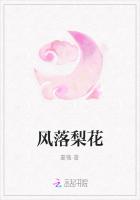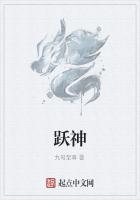There are various processes for obtaining gallic acid, one of which is to moisten the bruised galls and expose them for four or five weeks to a temperature of 80 degrees Fahr.; by which a mouldy paste is formed, which is pressed dry and then digested in boiling water, which after evaporation yields the acid, and mixed with the solution of green copperas, makes the, ink. A quicker process, however, is to put the bruised galls into a cylindrical copper of a depth equal to its diameter, and boil them in nine gallons of water--taking care to replace the water lost by evaporation. The decoction to be emptied into a tub, allowed to settle, and the clear liquid being drawn off, the lees are emptied into another tub to be drained. The green copperas must be separately dissolved in water, and then mixed with the decoction of the galls. Aprecipitate is then formed in the state of a fine black powder, the subsidence of which is prevented by the addition of the gum, which, separately dissolved in a small quantity of hot water, combines with the clear black liquid. Besides its effect in keeping the fine insoluble particles in suspension, the gum mucilage improves the body of the ink, prevents its spreading or sinking too much into the paper in writing, and also acts beneficially by forming a sort of compact varnish in it, which tends to preserve its colour, and shield it from the action of the air. If, however, too much mucilage is used, the ink flows badly from quill pens, and still more so from steel pens, which require a very limpid ink. The addition of sugar increases the fluidity of ink, and permits the quantity of gum to be increased over what it would bear without it;but, on the other hand, it causes it to dry more slowly, and besides it frequently passes into vinegar, when it acts injuriously on the pens. The dark-coloured galls, known as the blue Aleppo ones, are said by Ribaucourt, and others who have given much attention to the ingredients for ink-****** to be the best for that purpose, and they are generally used by the best makers.
"From their high price, however, and that of galls generally, sumach, logwood, and even oak bark are too frequently substituted in the manufacture of inks, but it need scarcely be said always injuriously. Ink made according to the receipt given above is much more rich and powerful than many of those commonly made. To reduce it to their standard one half more water may be safely added; or even twenty gallons of tolerable ink may be made from the same weight of materials.
Sumach and logwood admit of only about one-half or less of the green copperas that galls will take, to bring out the maximum amount of black colour.
The colour of black ink gradually darkens in consequence of the peroxidation of the iron in it on exposure to the air, but it affords a more durable writing when used pale; its particles being then finer, penetrate the paper more intimately, and on its oxidation is mordanted into it. It is advisable so soon as the ink has acquired a moderately deep tint, to draw it off clear into bottles and cork them well.
"According to the most accurate experiments on the preparation of black writing inks, it appears that the proportion of the green copperas ought to be, and not to exceed, a third of the decoction of galls used; but the proportions used vary according to the practical experience of ink-makers, who have all receipts of their own, which they deem best, and, of course, keep secret. In the precipitate an excess of colouring matter, which is necessary for its durability, is preserved in it. The blue galls alone ought to be employed in ****** the best quality of black ink. Logwood is a useful. ingredient, because its colouring matter unites with the sulphate of iron and renders it not only of a very dark colour, but also less capable of change from the action of acids or of the atmosphere.
Many attempts have been made by amateurs to make a good permanent black ink. A good story is told of Professor Traill. He had succeeded, after a long series of experiments, in producing an ink which he deemed to be in all respects A 1, and which resisted the action of all acids and alkalies alike. The pleased savant sent samples of it for trial to several banks and schools, where it gave general satisfaction; but, alas, an experimenting scribbler, thoughtlessly or otherwise, applied a ****** test undreamt of by the Professor, and with a wet sponge completely washed off his 'indelible,' and thereby finished his career as an ******* ink-maker!"* * * * * * *
"Nicholson, in his Dictionary of Chemistry, an old but valuable work, says that Ribaucourt found vitriol of copper, in a certain proportion, to give depth and firmness to the colour of black ink;but, from whatever cause, this has not taken a place among the commonly-used ink-****** ingredients--probably because it acts injuriously on steel pens."* * * * * * *
"A quart of rain Wate. 3 Ounces of Blue Knolly Gawalls. Bruise ym it must stand & be stirred 3 or 4 times in ym Day & then Strain out out all ye gawells all ten Days and 2 Ounces of Clear Gummary Beck & 1/2 an Ounce of Coperous 1/2 an Ounce of Rock Alum half an Ounce of Loafe sugar ye Bigness of a Hoarsel nut of Roman Vitterall Bray ym all small Before they be put in it must be stirred very well for ye space of two weeks.
"A receit forink.--1727
"William Satherwaite."
(The above receipt is a literal copy of the original, now in my possession. It purports to have been written with the mixture it specifies.)* * * * * * *
"M. de Champnor and M. F. Malepeyre, 1862, in their Mannel state that Ribaucourt's ink is one of the best then in use. The formula for its preparation is as follows:
Aleppo galls, in coarse powder, 8 ounces.
Logwood chips, 4 "
Sulphate of iron, 4 "
Powdered gum-arabic, 3 "
Sulphate of copper, 1 "
Crystallized sugar, 1 "

